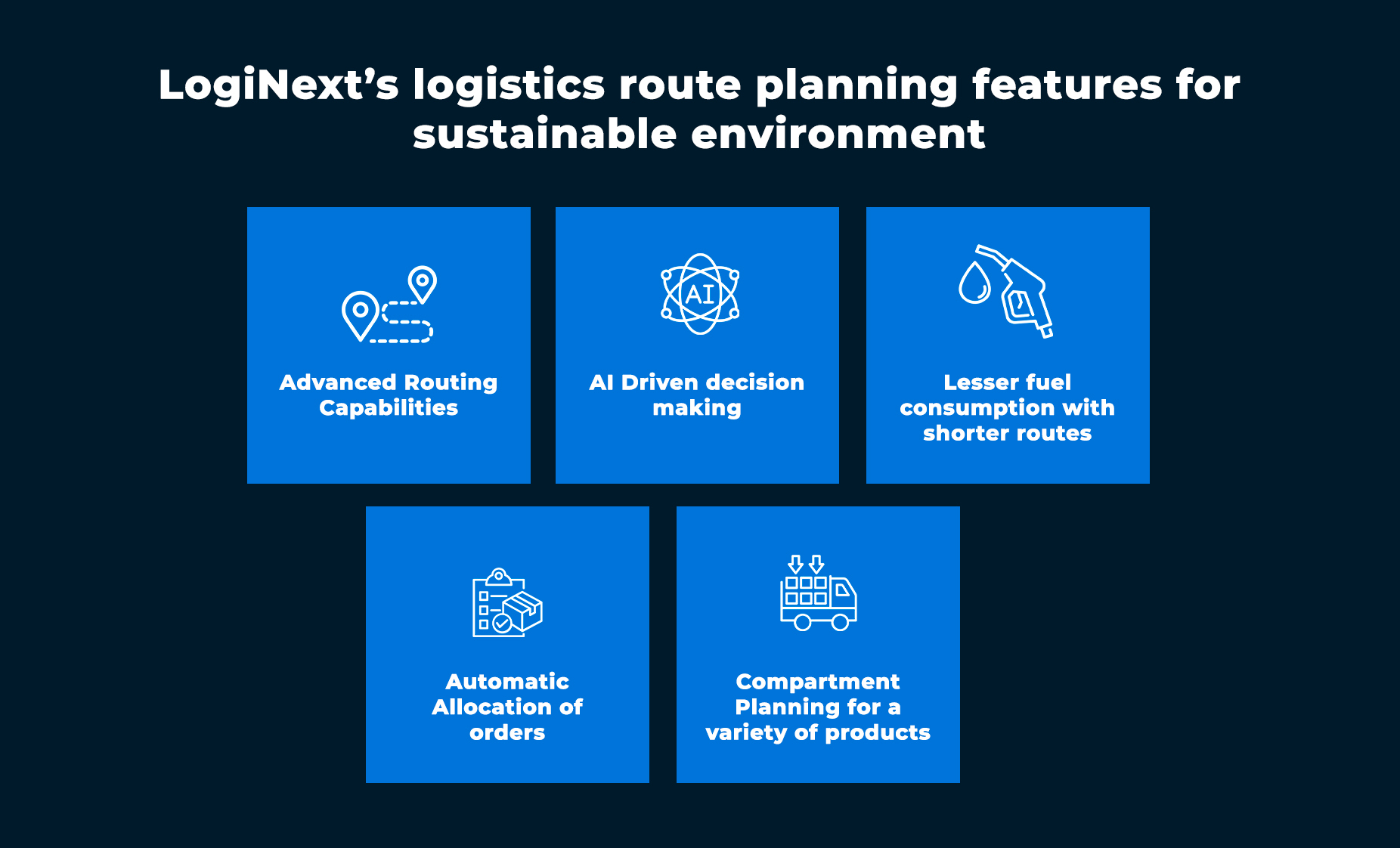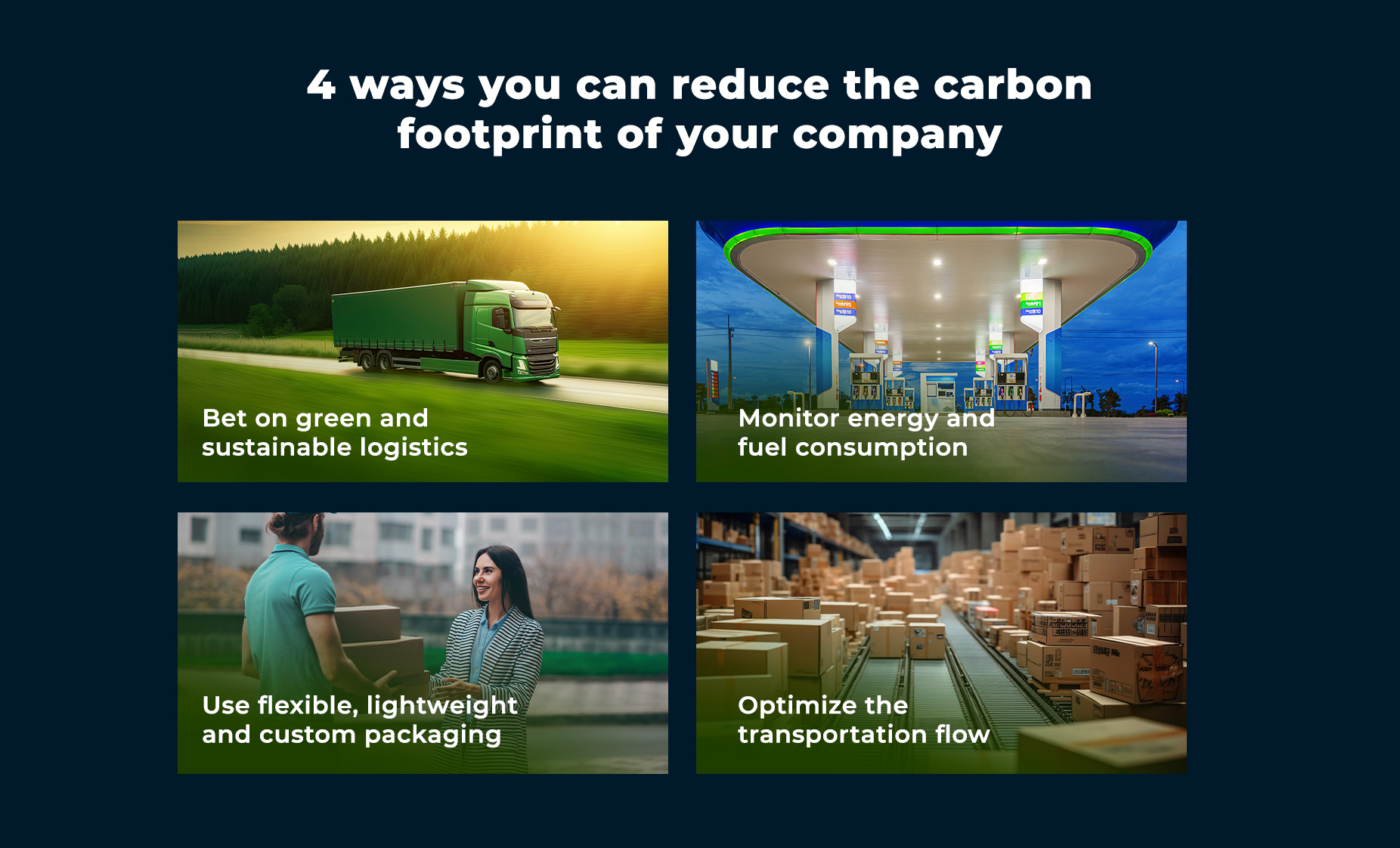
How to Move Towards Sustainability with Precise Logistics Route Planning and Optimization?
Sustainability and carbon footprint aren’t just buzzwords in logistics route planning. They are major concerns that businesses across the globe, no matter big or small need to act proactively on. Making efforts and defining processes which are aimed at maintaining ecological balance and making use of resources in the most environmentally friendly manner is the need of the hour. No matter if you are a F&B business or a transportation giant, everyone needs to contribute by reducing fuel consumption and cutting carbon emissions.
In this article, let’s understand how planning driver schedules, vehicle capacities, start and end points, and service times can be a major contributor in building a sustainable environment. You’ll understand how mapping out a route that is cost effective or less time consuming can succeed in carrying out deliveries. Let’s focus on the most efficient manner to do so while serving the bigger purpose of reducing the carbon footprint. Afterall, the number of vehicles on the road are major contributors to today’s global warming scenario.
What do you need to know?
– Technology Supply Chains Initiative, freight transportation contributes approximately 8% of global greenhouse gas emissions.
– In the U.S., 27% of all carbon emissions are the result of transportation, and within transportation, 26% are from medium and heavy duty trucks, for a total of 422.8 million metric tons CO2 equivalent.
– The 2023 Gartner Harnessing Analytics ROI in Supply Chain Survey showed that 76% of organizations report that having more formal relationships with external data sources helps to achieve significant strides toward their decarbonization goals.
Industry leaders that have embraced logistics routing for sustainability:
UPS- Utilizes advanced routing algorithms to optimize its vast fleet
DHL- Uses eco-friendly vehicle technologies, aiming to achieve zero emissions by 2050
Amazon- Leverages route optimization to minimize environmental impact
How is logistics route planning and sustainability connected?
Before delving into how route optimization aids in carbon footprint reduction, it’s crucial to grasp the carbon conundrum within logistics. Freight transportation, whether by road, air, sea, or rail, relies heavily on fossil fuels, emitting CO2 and other pollutants. Inefficient routing exacerbates this issue, leading to unnecessary mileage, idle time, and fuel consumption.
Logistics route planning and optimization software revolutionizes traditional logistics. It leverages advanced algorithms to chart the most fuel-efficient paths for vehicles.
Also Read: 4 Ways LogiNext Offers Ultimate Way To Achieve Smoother Deliveries With Advanced Route Planning
Taking miles out of your supply chain with logistics route planning using LogiNext:
Reducing miles is not just about saving money but also doing your bit towards the environment. Optimization starts from gathering information about the various routes using a logistics route planning system.
Route optimization software is a powerful tool that enables carriers to significantly reduce their CO2 emissions.
Foster sustainable logistics along with cost efficiency with LogiNext’s feature rich platform. Prioritize cost efficiency, faster routes as well as unparalleled customer experience.
LogiNext’s logistics route planning features for sustainable environment
Advanced Routing Capabilities: Technology and data offer the best solutions when used wisely as a blend. With LogiNext’s route optimization software, you can conveniently identify the best suited routes. This will help in lesser traffic congestion and offer faster deliveries. AI Driven decision making: With the power of artificial intelligence, identifying the fastest and most efficient routes ensures faster deliveries. It also helps in prioritizing sustainability due to lesser carbon emissions and fuel consumption. Lesser fuel consumption with shorter routes: Human resources and fuel contribute significantly to overhead costs. Inefficient routes, stemming from traditional methods, lead to increased expenses, which can be curbed using a route optimization software. Automatic Allocation of orders: Identifying routes, suitable driver and vehicle for numerous deliveries and order surge hours can be a cumbersome task. LogiNext’s auto allocation feature identifies the most suitable drivers for the deliveries. It usually depends on factors such as delivery type and distance. Compartment Planning for a variety of products: Retail and CPG businesses usually need to deliver a variety of temperature controlled products. Investing different vehicles for different products leads to inefficient costing, time investment, fuel consumption as well as affects the customer experience. LogiNext offers temperature controlled compartment planning for deliveries of all types of products in a single trip. Vehicle Load Optimization: Maximizing the cargo load capacity of vehicles ensures that each trip is as efficient as possible. Logistics route software should include features that assist in planning the loading of vehicles. This needs to be based on the size and weight of parcels, optimizing space, and reducing the need for additional trips. Don’t Miss: Why Is Route Planning The Key In The Transportation And Logistics Industry? How do you determine the carbon emission done by your fleet throughout their journey to the destination? What if you’ve to calculate the monthly carbon emissions done for all your deliveries? It is impossible to calculate what impact your business has on the environment manually. LogiNext offers the GHG carbon emission calculator that allows you to simply input your fleet size and average daily distance calculated. Additionally, it will then calculate the reduction in GHG emissions in tons for the annual distance covered. The calculation is based on several parameters from LogiNext’s simulation results and numbers put out by Unites States Environmental Protection Agency. Optimized routes translate to shorter delivery times, improved resource utilization, and increased customer satisfaction. By maximizing efficiency, companies can achieve more with fewer resources, fostering long-term sustainability. FUN FACT: Did you know Coldplay released a sustainability report taking about everything they did during their recent world tour to reduce their carbon footprint? From using plant-based LED wristband till kinetic dance floors for generating energy and planting a tree for every ticket sold, they used several innovative ways to reduce carbon emissions. If they can do so then you are anyway well-equipped with a logistics routing software that gives you numerous opportunities to do so. In the quest for a greener future, route optimization emerges as a potent tool for reducing the carbon footprint of logistics operations. By harnessing data-driven algorithms and embracing sustainability metrics, companies can navigate towards more eco-friendly practices . This can be done without compromising on efficiency or profitability. As we embark on this journey towards sustainable logistics, each optimized route brings us one step closer to a cleaner, healthier planet for generations to come. 
LogiNext’s GHG Carbon Emission Calculator for Enterprises:








@LogiNext